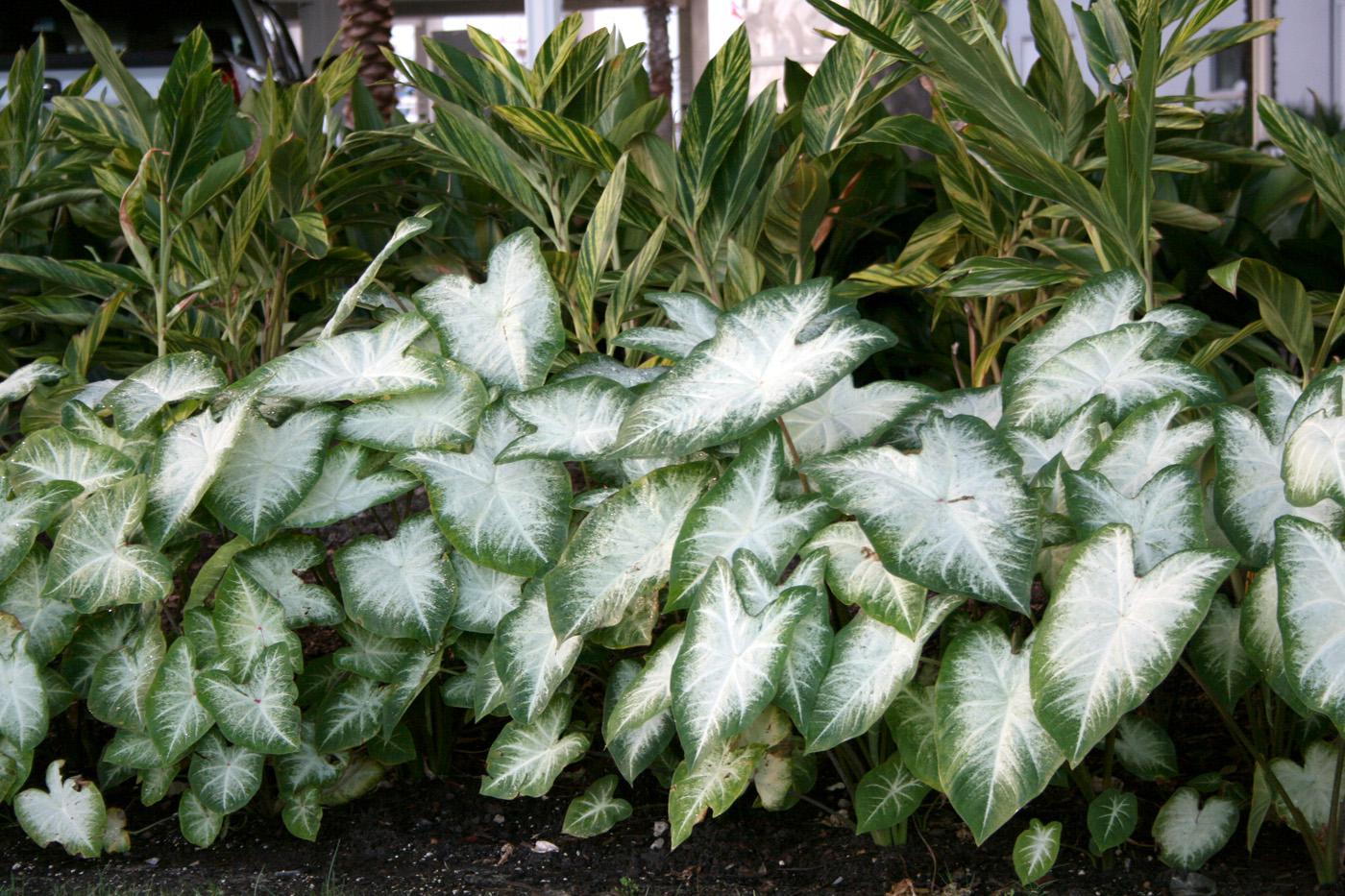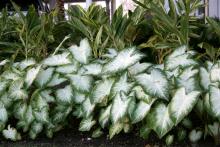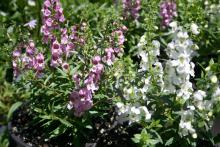Information Possibly Outdated
The information presented on this page was originally released on July 8, 2010. It may not be outdated, but please search our site for more current information. If you plan to quote or reference this information in a publication, please check with the Extension specialist or author before proceeding.
Angelonia and caladium provide summer color
Angelonia and caladium should top your shopping list when you visit your favorite garden center looking for summer color.
For full sun, select Angelonia, also called summer snapdragons. These plants begin flowering in late spring and continue to bloom profusely until frost. They require very little deadheading.
Because plants with round flowers dominate the garden world, the spiky texture of the Angelonia flower stalks offers welcome contrast in any summer garden.
In 2007, the Serena Angelonia were named a Mississippi Medallion winner. Flower colors include blue, pink, violet and white. Serena Angelonia will grow to 12 inches tall and spread up to 14 inches.
Try pairing white Serena Angelonia with orange Sunpatiens or Titan vinca, another 2007 Mississippi Medallion winner, for great full sun combinations. Melampodium, lantana and profusion zinnia also make great combination plants.
Angelonia comes to us from the hot climates of Mexico and the West Indies. Once established, Angelonia is drought and heat tolerant, making them well suited to the hot summer conditions in Mississippi landscapes.
For the shady parts of your garden, be sure to bring home some Caladium. Caladiums are tropical foliage plants that were discovered within the Amazon basin of Brazil. Widely grown for their colorful leaves, they are used as container, border and bedding plants.
The foliage typically has colored midribs with high-contrast margins. Foliage colors include various shades and combinations of red, pink, white and green. Most foliage is heart shaped with long petioles. Caladiums can be up to 30 inches tall. Shorter caladiums typically have thicker, elongated leaves and a compact growth habit.
Carolyn Wharton, pink with red veins and a green margin, and White Christmas, white with red and green veins, are two popular selections. Colorful caladiums provide a striking contrast to the green foliage of other plants. A fantastic combination is Red Flash caladium planted with spotted dead nettle, purple nemesia and yarrow.
Mulch caladium plants when they are established to keep the soil moist and cool.
Caladium are sensitive to cold weather and should be considered annuals except in the coastal areas of Mississippi that have mild winters.
In cold areas, the tubers can be saved and replanted the next year. Dig tubers in the fall when soil temperatures go below 60 degrees. Lightly brush off soil and remove any foliage. Pack the tubers in dry peat moss in onion bags and store dry at about 60 degrees. Sort by cultivar and label your specimens before storing them away.
Both Angelonia and caladium will thrive in fertile, well drained soil. Add 3 to 4 inches of high-quality mulch to improve even the most compacted clay soil. Fertilize with a complete garden fertilizer such as controlled release 8-8-8 or 14-14-14. Use one pound per 100 square feet for season-long nutrition.
Depending on whether you have sun or shade in the garden, plant Angelonia or caladium for nonstop color the entire summer and beyond.









